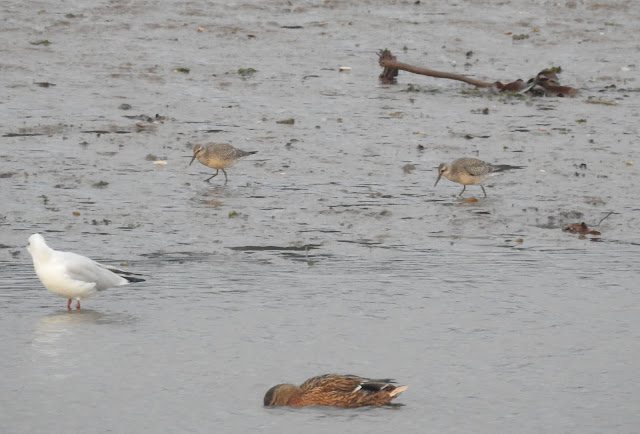I wandered into the Tower Hide early evening on the 3rd and was greeted by the very pleasant sight of a mass gathering of large gulls resting on the shingle opposite. And even more pleasantly, virtually the first gull I raised my bins at was this first-winter Yellow-legged...
I just couldn't take my eyes or camera off of it, and spent ages papping away and gawping at all those lovely replaced scapular feather. But then I remembered there were another 300+ gulls to look at..
I swung around to the left, started scanning and almost immediately spied an interestingly looking clean and pale fronted juv/1w large gull asleep in the flock. I grabbed my scope but due to the angle of the bird this didn't help much at all, it was asleep with its head tucked in facing directly towards me. Still though, for whatever reason thoughts of Caspian Gull were already in my mind, it just looked leggy and strikingly clean breasted and pale. I then noticed it was bearing a yellow-colour ring...
It was an easy read, XLTC. I read it again a couple of times to be sure and then took my eye off the scope to write the code down. What happened next wasn't in the script.
Every single one of the 300+ gulls took to the air, with roughly half of them flying off. Despite further scanning the yellow-ringed gull was gone. And four days later I haven't seen it again. What's even worse is we never saw what actually flushed the gulls, making it an even more frustrating turn of events.
To my absolute horror, looking up the ringing scheme later that evening showed it had been rung in Germany in a Caspian Gull colony! My email to the ringing scheme coordinator included a plea for any pics or other sightings of it - but there had been none since it was ringed as a grey fluffy chick on 9th June 2020...
It's important to note that although it was ringed as a Caspian Gull, in that part of the world hybrids are a real problem and a lot of the gull colonies are now a complete jumble of DNA . This in my eyes makes it even more important that someone else sees and ideally photographs XTLC! I need to know what it is.
Please, someone, put me out of my misery...










